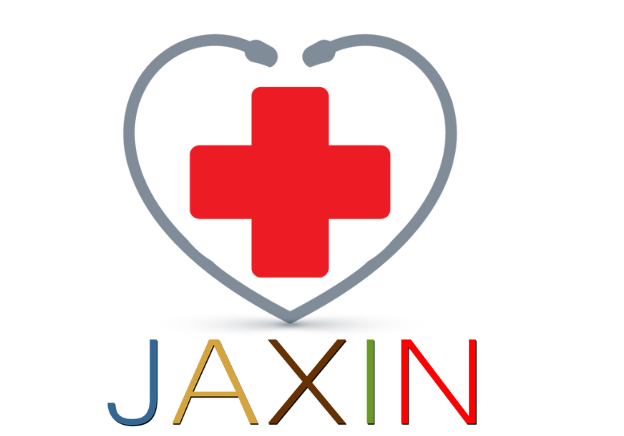
Hypertension
Overview
Hypertension, or high blood pressure, is a common chronic condition that increases the risk of heart disease, stroke, and other health problems.

Common Symptoms
Often called the “silent killer,” hypertension may not show symptoms until severe, but can include:
- Headaches
- Shortness of breath
- Nosebleeds
Management
Managing hypertension involves lifestyle changes (diet, exercise, reducing sodium intake), and medications as prescribed by a healthcare provider.
Management Steps | Mild Hypertension | Moderate Hypertension | Severe Hypertension |
Blood Pressure Range | Systolic: 130-139<br>Diastolic: 80-89 | Systolic: 140-159<br>Diastolic: 90-99 | Systolic: ≥160<br>Diastolic: ≥100 |
Lifestyle Modifications | – Reduce salt intake – Increase physical activity – Weight loss (if overweight) – Limit alcohol intake – Quit smoking – Eat a balanced diet (DASH diet) – Monitor blood pressure regularly | – Continue lifestyle modifications from mild hypertension | – Immediate lifestyle modifications from mild hypertension |
Medication | Consider antihypertensive medication if lifestyle changes are ineffective after 3-6 months | – Initiate antihypertensive medication: – ACE inhibitors or ARBs – Calcium channel blockers – Thiazide diuretics | – Initiate or intensify antihypertensive medication regimen:- Combination therapy often required (e.g., ACE inhibitors + calcium channel blockers + diuretics) |
Follow-up and Monitoring | – Regular blood pressure monitoring | – Regular follow-up and blood pressure monitoring | – Frequent follow-up and blood pressure monitoring |
Assessment |
| – Assess for target organ damage (heart, kidneys, eyes) | – Assess for target organ damage (heart, kidneys, eyes) – Consider referral to a specialist (e.g., cardiologist, nephrologist) if blood pressure is difficult to control or if there are signs of organ damage |
Prevention
A healthy diet, regular physical activity, maintaining a healthy weight, and avoiding excessive alcohol and tobacco use can help prevent hypertension.

How can you be active in your Hypertension Management?
Get involved
Patients can take an active role in managing their hypertension through various strategies and activities. Here’s a comprehensive guide on how they can get involved:
Self-Monitoring and Record Keeping
- Home Blood Pressure Monitoring:
- Regularly check blood pressure at home using a reliable blood pressure monitor.
- Keep a log of readings, noting the date, time, and any activities or symptoms.
- Share this log with healthcare providers during appointments.
Education and Knowledge
- Hypertension Education:
- Learn about hypertension, its risks, and the importance of managing it.
- Understand the factors that contribute to high blood pressure and ways to control them.
- Stay Informed:
- Keep up with the latest research and recommendations on hypertension management.
- Read reliable sources of information such as books, reputable websites, and patient leaflets provided by healthcare providers.
.

Lifestyle Modifications
- Diet and Nutrition:
- Follow a heart-healthy diet, such as the DASH (Dietary Approaches to Stop Hypertension) diet, which emphasizes fruits, vegetables, whole grains, and low-fat dairy products.
- Reduce sodium intake by avoiding processed foods and not adding extra salt to meals.
- Limit alcohol consumption.
- Physical Activity:
- Engage in regular physical activity, aiming for at least 150 minutes of moderate-intensity aerobic exercise per week.
- Include strength training exercises at least two days a week.
- Weight Management:
- Achieve and maintain a healthy weight through a balanced diet and regular exercise.
- Monitor body weight regularly and set realistic weight loss goals if necessary.
- Quit Smoking:
- Seek help to quit smoking if you are a smoker.
- Avoid exposure to second hand smoke.

Medication Management
- Adherence to Medication:
- Take medications exactly as prescribed by healthcare providers.
- Use pill organizers or set reminders to ensure medications are taken on time.
- Understand the purpose and potential side effects of each medication.
Regular Medical Check-Ups
- Follow-Up Appointments:
- Attend all scheduled appointments with healthcare providers.
- Prepare questions and discuss any concerns during visits.
- Review blood pressure logs and discuss any patterns or irregularities with the doctor.
- Routine Assessments:
- Get regular assessments of blood pressure and overall cardiovascular health.
- Monitor for comorbid conditions such as diabetes, high cholesterol, and kidney disease that can affect blood pressure.
Stress Management
- Stress Reduction Techniques:
- Practice stress-reducing techniques such as mindfulness, meditation, deep breathing exercises, or yoga.
- Engage in hobbies and activities that promote relaxation and well-being.
Mental and Emotional Health
- Mental Health Support:
- Recognize the emotional impact of living with hypertension and seek counseling or therapy if needed.
- Engage in activities that promote mental well-being and relaxation.
Community and Support
- Support Groups:
- Join hypertension support groups to share experiences and gain insights from others managing high blood pressure.
- Participate in online forums or local community events focused on hypertension management.

Empowerment and Advocacy
- Advocate for Yourself:
- Be proactive in healthcare decisions and express any concerns or preferences.
- Work with healthcare providers to set realistic and achievable health goals.
- Educate Others:
- Share knowledge and experiences with family and friends to help them understand hypertension.
- Volunteer or participate in community health initiatives to raise awareness about hypertension.
By actively participating in these aspects of hypertension management, patients can take control of their health, improve their quality of life, and potentially reduce the risk of complications such as heart disease, stroke, and kidney problems.

